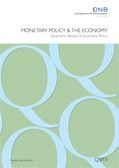Monetary Policy and the Economy Q4/15
 OeNB
OeNB
- Erschienen:
- Dezember 2015.
 OeNB
OeNB
Monetary Policy and the Economy Q4/15 (PDF, 1,1 MB) Dezember 2015.
Call for applications: Visiting Research Program (PDF, 56 kB) Monetary Policy and the Economy Q4/15 de 31.12.2015, 00:00:00
Austrian economy to grow at same pace as euro area economy in 2016 and 2017 (PDF, 432 kB) Fenz, Schneider. Fenz, Schneider – Monetary Policy and the Economy Q4/15 de 31.12.2015, 00:00:00
Interest rate perceptions and expectations when interest rates are low – survey evidence on Austrian households
(PDF, 411 kB)
Beer, Gnan, Ritzberger-Grünwald.
Beer, Gnan, Ritzberger-Grünwald – Monetary Policy and the Economy Q4/15
Are Austrians fully aware of the currently prevailing ultra-low interest rate environment? Do
they expect these low interest rates to persist for a protracted period? To answer these questions,
we conducted a survey on the interest rate perceptions and expectations of Austrian
households and present the survey evidence in this study. We find that people are largely
aware that interest rates are extremely low and that they expect rates to stay low for some
time. But we also find that the knowledge of interest rates is limited, as a high fraction of respondents
does not know the levels of various types of interest rates and as people tend to
overestimate interest rates both on savings accounts and mortgage loans. Likewise, quite a
large fraction of survey participants has not formed any expectations about how high or low
interest rates will be in 2020. Whereas awareness of interest rate developments is correlated
with socioeconomic factors and the personal relevance of information, these factors appear to
only weakly affect perceptions and expectations of the level of interest rates. Our findings
suggest that in modeling the monetary policy transmission mechanism, one cannot simply
take for granted that people are well-informed about actual interest rates. One needs to take
into account perception limitations and biases. People’s limited knowledge of interest rates
may be seen as yet another argument for central banks to pursue an active communication
policy and financial literacy activities.
de
D12, D14
31.12.2015, 00:00:00
Financing the Austrian economy – a bird’s eye view based on the financial accounts from 1995 to 2014 and a look at the road ahead
(PDF, 417 kB)
Andreasch, Fessler, Schürz.
Andreasch, Fessler, Schürz – Monetary Policy and the Economy Q4/15
As a well functioning financing system is essential for an economy, the EU has launched a
Capital Markets Union initiative to ensure stronger integration of European capital markets
and to reduce the dependence of enterprises on banks. Especially since the beginning of the
financial and economic crisis, much discussion has centered on ways to foster financing channels
aside from classical bank lending. A precondition for boosting alternative sources of
finance is to check the absolute values and the sources available for financing. We find that
while financing through classical bank lending has lost its overwhelming importance in the
past 20 years, it remains the major financing channel. There is still potential for the household
sector’s role in direct business financing to increase, as holdings in savings accounts and real
estate of private foundations are comparatively large. Unlocking 1% of sight and savings
accounts of the household sector would imply an increase of 2.8% (direct business participations),
3.3% (other stocks) and 3.2% (listed stocks) in direct business financing. New SME
bond markets could be another investment channel through which to allocate unlocked capital.
Improving debt securitization might help increase credit supply.
de
Capital Markets Union, banking, securitization, SME bonds
E50, G10, G14, G23
31.12.2015, 00:00:00
The central bank balance sheet in the (very) long run – how to construct it, how to read it, what to learn from it (PDF, 118 kB) Jobst, Scheiber. Jobst, Scheiber – Monetary Policy and the Economy Q4/15 de 31.12.2015, 00:00:00